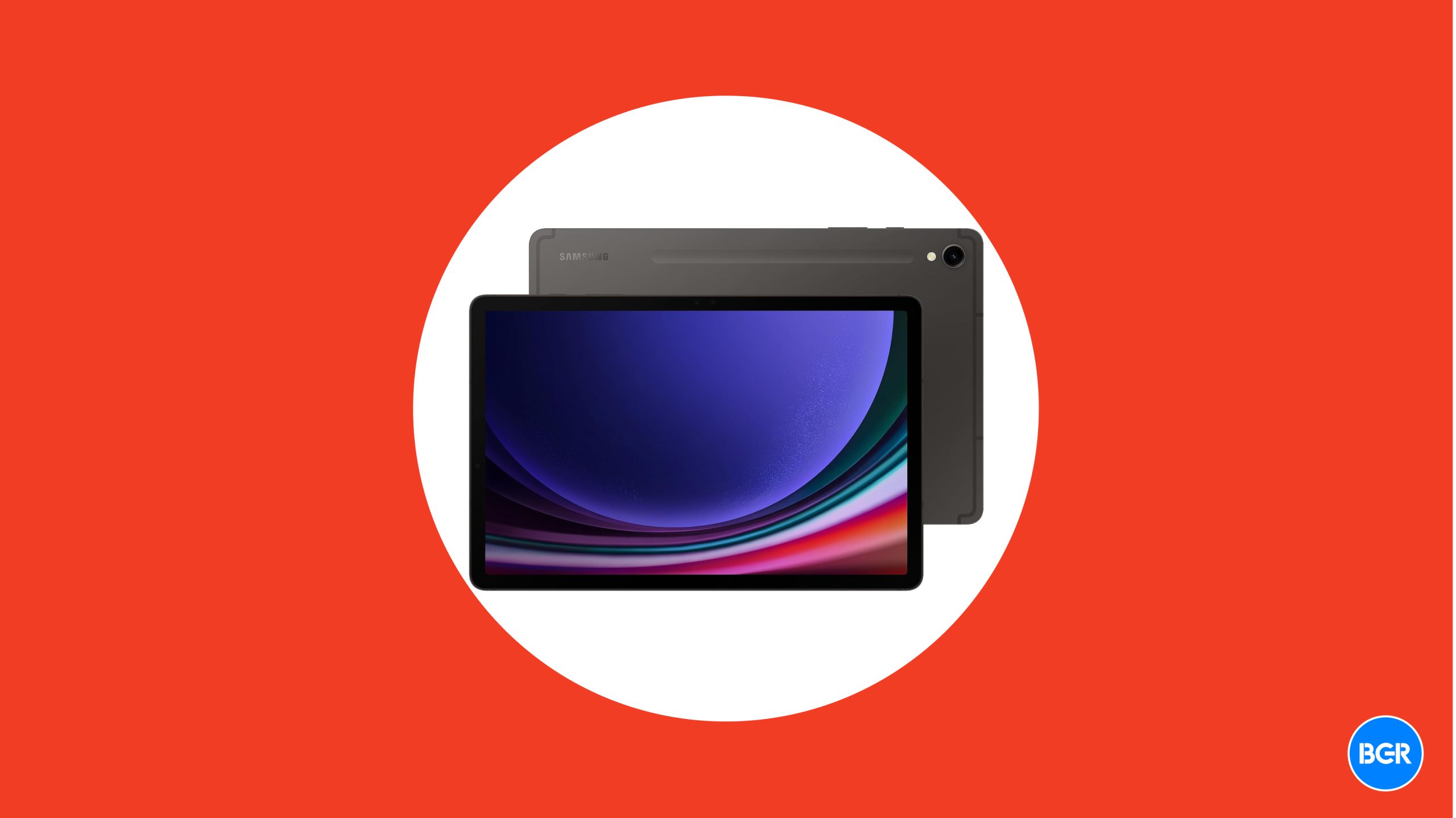Whether you’re creating social media stories, explainer videos, or traditional TV commercials, the types of marketing you choose for your business will affect who sees your products.
Marketing is the activities companies engage in to promote their brands and attract sales. It involves tasks like user research, content production, and advertising. Whatever the marketing strategy, the general goals are similar: to engage, inform, and attract customers to a company.
When planning a marketing strategy for your business, you’ll want to consider multiple types of marketing. By harnessing several sales channels, you’ll improve your ability to target specific audiences.
What is marketing?
Marketing is any action you take to get people interested in what you’ve got to offer. It’s about getting people to buy what you’re selling by using the right message.
Marketing involves market analysis, research, and a strategy to guide your efforts. There are also many different marketing channels you can use, including influencer marketing, SEO, and social media.
There are different types of marketing, such as B2B marketing and B2C marketing.
B2B marketing
B2B marketing refers to business-to-business marketing, which is where you market products and services to other businesses instead of to consumers. There are two approaches: lead-based marketing and account-based marketing. Brands that do B2B marketing include software brands like Zoom and ecommerce brands like brooklinen.
B2C marketing
Business-to-consumer (B2C) marketing refers to the strategies and tactics you use to sell to individuals. Campaigns are more about evoking an emotional response from the customer than just showing how great your product is. Brands like Allbirds and Dr. Squatch are examples of companies doing B2C marketing.
21 types of marketing
Traditional marketing strategies
While most companies are spending more on digital marketing than traditional types of advertising, old-school marketing strategies involving TV ads, industry events, and direct mail are still powerful sales levers.
1. Outdoor marketing
Outdoor marketing is any type of marketing that takes place outside of the consumer’s home. This form of marketing relies on high visibility within the public realm and may include billboards, flyers, shop signs, transit vehicles, bench ads, or even stickers—all designed to draw attention to a promotion or service.
2. Print marketing
This form of marketing is the distribution of advertising in magazines, newspapers, and brochures. This method can help gain attention for a business at either the local or national level.
Print ads in a local newspaper, for example, can help promote services throughout a community. An advertisement in a nationally distributed magazine can garner brand awareness more broadly, across multiple markets.
Businesses may even choose to develop their own publications or sponsor the creation of content relevant to their interests.
Watch brand Bremont publishes a magazine called The Bremont Briefing. Bremont
3. Direct mail marketing
With direct mail marketing, businesses send advertising materials directly to the customer’s home. Mailings often contain a call to action (CTA) or an incentive like coupons and discounts to encourage potential customers to become actual customers.
Direct mail marketing recipients may have previously expressed interest in the business, or simply been part of a community mailing effort by a local business. Direct mail isn’t limited only to local brands.
After running a direct mail campaign to re-engage customers who had not purchased anything for at least 35 days, BOOM! By Cindy Joseph saw a 2,600% ROI. The pro-aging cosmetics and skin care brand reached $40,00 in sales, generated by a $1,500 postcard marketing strategy.

PostPilot
4. Television and radio marketing
TV and radio have evolved to meet the demands of the streaming era (think: podcast ads). As such, broadcast commercials remain an influential marketing method for targeting audiences with specific interests.
The costs for television ads can vary depending on network and time slot, but can be expensive—even for a few seconds of airtime (more than $7 million for 30 seconds during the Super Bowl, for example). To gain attention on such a mainstream marketing channel, TV advertisers must get creative and maximize their time to captivate their target audience. That may mean using punchy, emotional, funny, or otherwise memorable content to grab and hold the viewer’s attention.
TV ads can be an effective way to introduce a brand to audiences before following up with touchpoints using other types of marketing.
5. Word of mouth
Word-of-mouth marketing campaigns are an effective way to influence organic conversations about your brand. The most involved buyers often recommend their personal contacts, making word of mouth a powerful influence on their purchasing decisions and generating high lifetime customer loyalty. It’s a free advertisement from a customer whose experience has been positive.
Some ways to encourage word-of-mouth marketing are through referral programs, which incentivize customers to refer friends and family. Or even running user-generated-content contests on social media, which is where customers post photos, videos, or testimonials with a specific hashtag. The winner would get prizes, recognition, or special perks.
👉 Want to create a referral program for your store? Try a dedicated Shopify app.
6. Public relations
Most modern-day historians claim public relations (PR) dates back to the early 1900s. PR is all about spreading the word about your company (hopefully in a good way). Ideally, you put together PR strategies to get mentioned in new stories or featured in a niche publication, and control the narrative. You choose how you want people to think about your brand, then write a press release to make it known publicly.
📚 Learn: 13 Free Publicity Ideas That Will Get Your Business Press
Digital marketing strategies
Digital marketing is a different beast than traditional marketing strategies, though the same goals apply: acquire and retain customers. Digital marketing appears in a variety of forms across the internet—from pop-ups on websites to YouTube ads.
7. Search engine marketing (SEM)
Businesses employ two main types of search engine marketing (SEM) to increase traffic: paid and organic. Both are effective in their own right, providing a company with two avenues to reach an audience.
Paid search
Paid search engine marketing (SEM) places sponsored advertisements at the top of a search engine results page (SERP). This premium real estate increases the likelihood that users will click on your content.
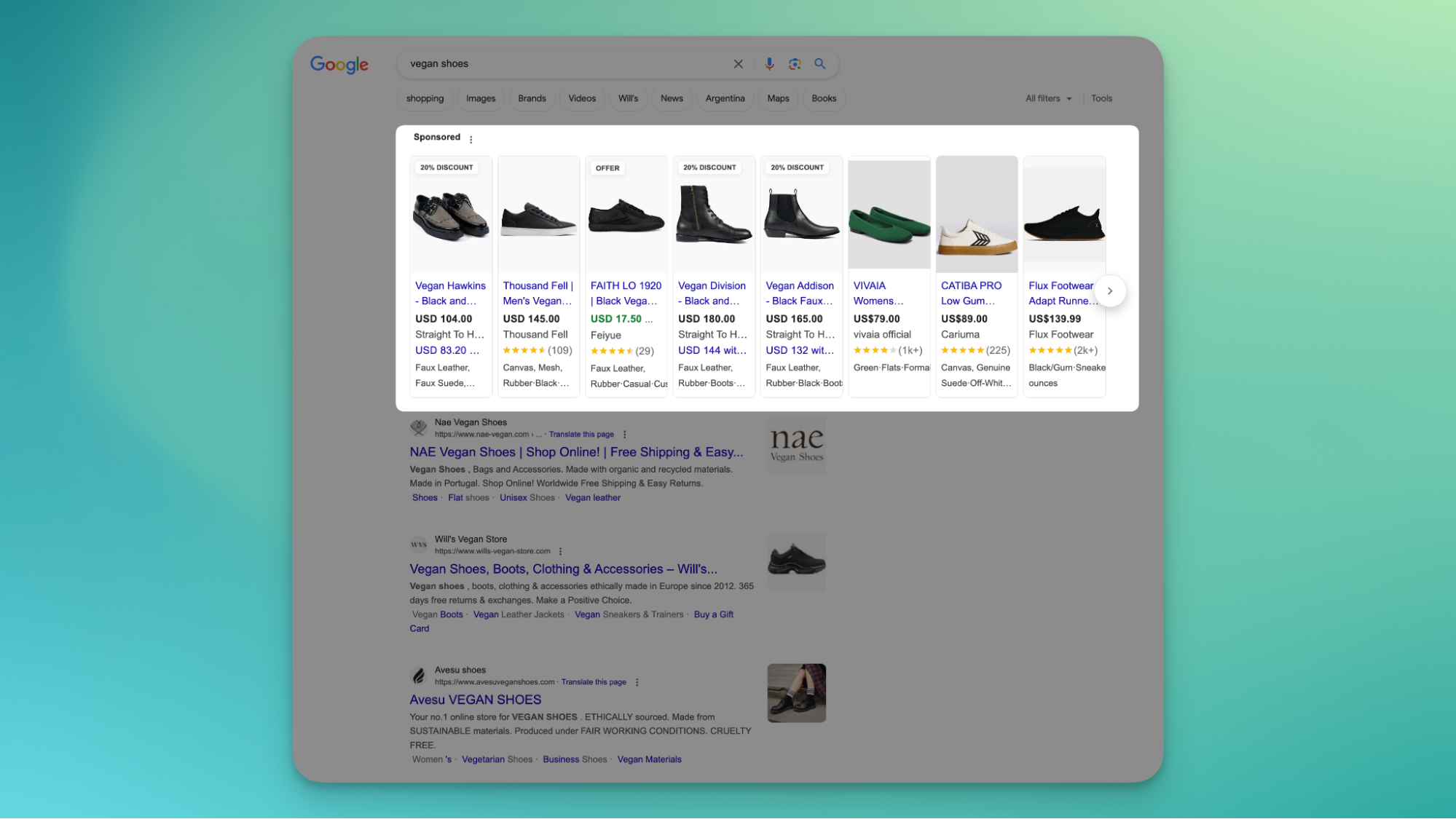
An example of sponsored ads on Google results page for query “vegan shoes.”
Search engine optimization
Organic search engine optimization (SEO) relies on an understanding of internet traffic patterns and targeted keywords to increase a company’s ability to reach users through search engines. SEO uses informative content to help improve a website’s ranking, which in turn increases visibility and attracts more customers.
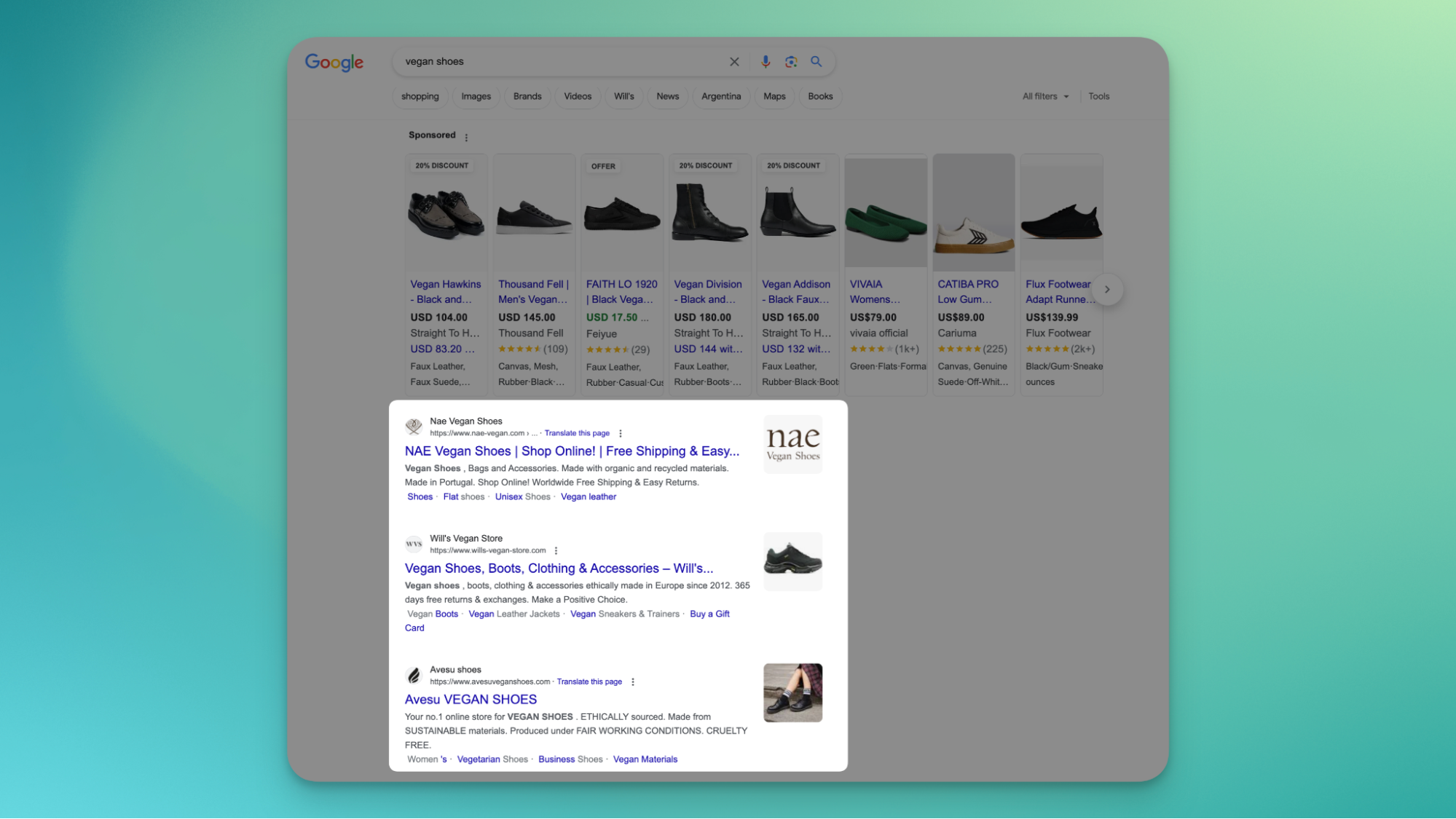
Organic search results for the query “vegan shoes” on Google.
8. Email marketing
Email marketing is a form of direct marketing that targets current or potential customers. Similar to direct mail marketing, email marketing delivers promotional materials straight to a person’s inbox. These materials take the form of sale solicitations, coupons, promo offers, and informative content.
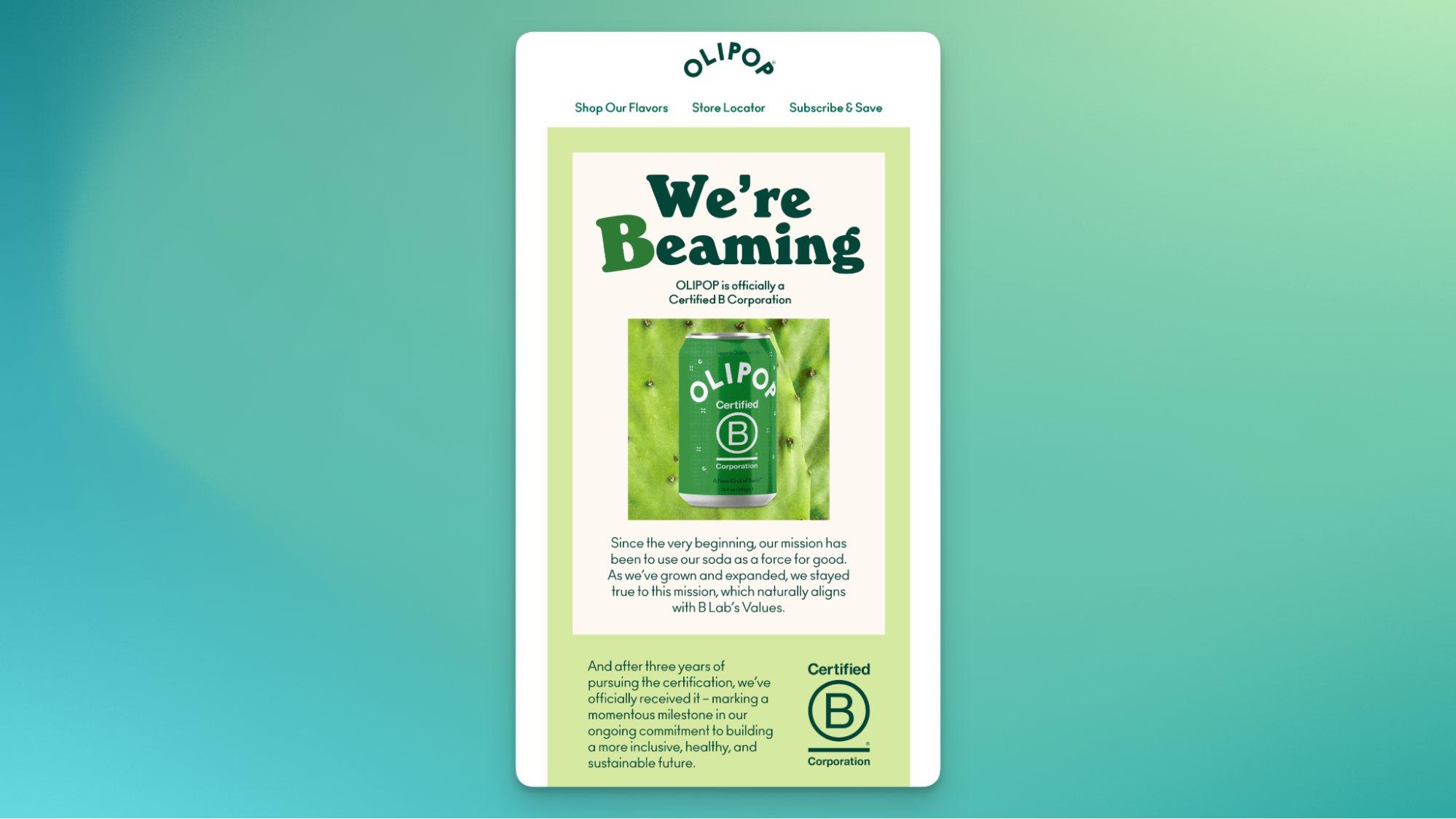
Olipop sent customers an announcement about its recent B Corporation certification. Email Love
Create branded emails in minutes with Shopify Email
With Shopify Email, you can easily create, send, automate, and track email campaigns, all from your Shopify admin—no coding required.
Discover Shopify Email
9. Content marketing
Content marketing is a type of marketing that relies on produced content to incite a specific action in a targeted audience. You can use content marketing to promote a brand, influence consumer behavior, or build customer loyalty.
Here are a few popular forms of content marketing:
Podcasts
Podcasts are audio-only content that can help bring awareness to a particular person or service. For instance, a business analyst with a weekly podcast series may give away advice on their platform to capture audience loyalty. In turn, this could lead to paid speaking engagements, teaching offers, or other lucrative activities for the podcast host.
Infographics
Infographics combine visuals and data to educate an audience about a specific service or product. This data-rich content provides user-friendly information alongside graphics, which come in various forms, including flow charts and step-by-step breakdowns. Together, they make it easy for viewers to absorb and retain information.
Videos
Unlike podcasts and infographics, video content incorporates audio with visuals to create a compelling call to action. Video marketing can attract users to certain social media platforms, websites, or product pages. Gymshark uses its YouTube channel to share original stories, workouts, and other inspirational content, which help attract gym-goers to the brand.
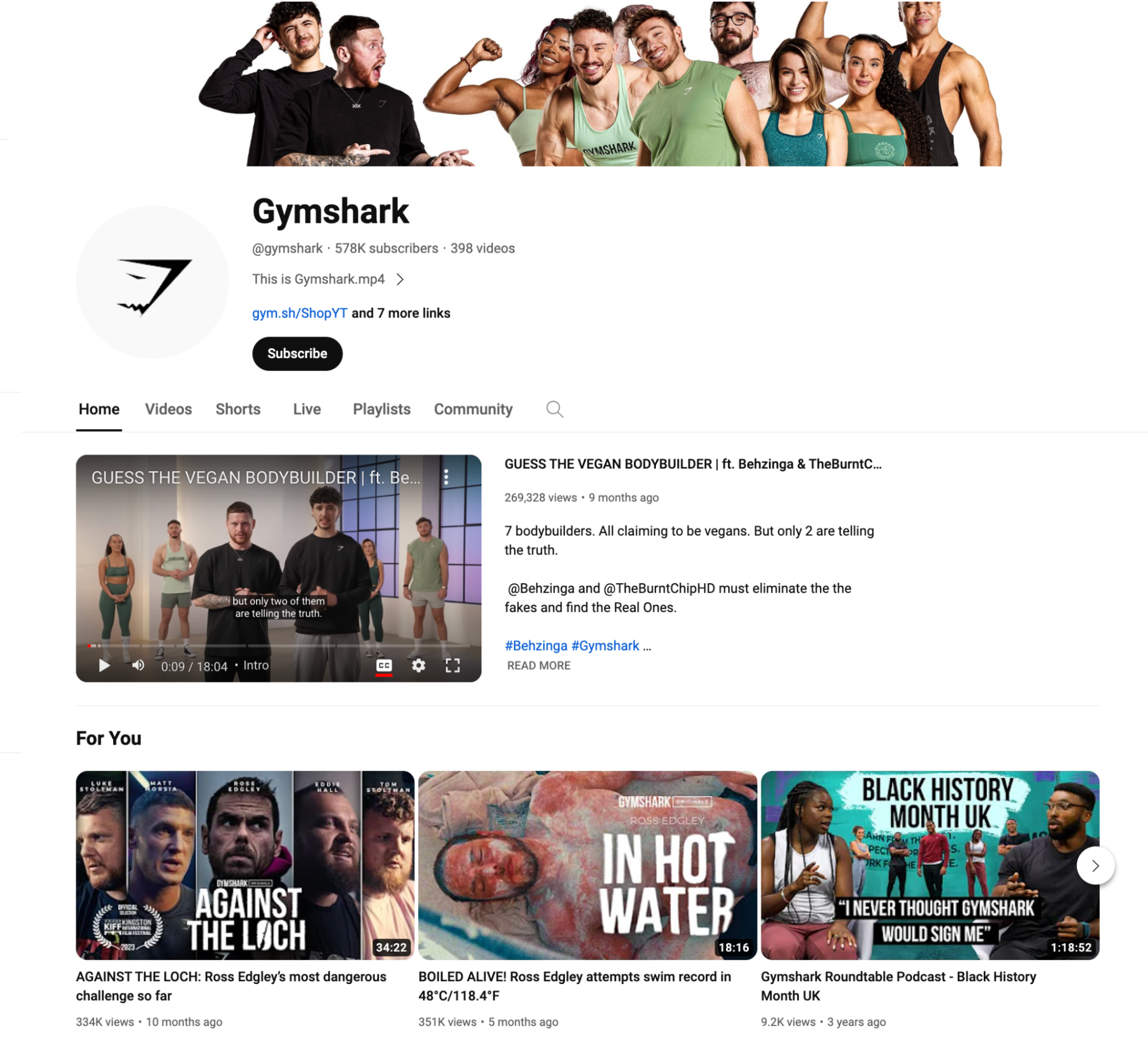
10. Social media marketing
Social media marketing is a popular marketing strategy for any business with—or looking to build—an online presence. Social media marketing strategies include both organic and paid methods to recruit new customers and reach out to existing ones.
Organic social media marketing
Organic social media marketing involves free posts on social media sites that use photos, videos, captions, and hashtags to reach an audience. These posts may appear on sites like X (formerly Twitter) or Instagram, but are subject to the platform’s algorithm and come with no guarantees of reaching a targeted number of viewers.
Paid social media ads
Brands or companies can pay certain social media platforms to bypass the free algorithmic limitations and promote their advertising content. Paid social media posts have a higher chance of reaching a larger viewership by extending beyond the business’s own follower pool.
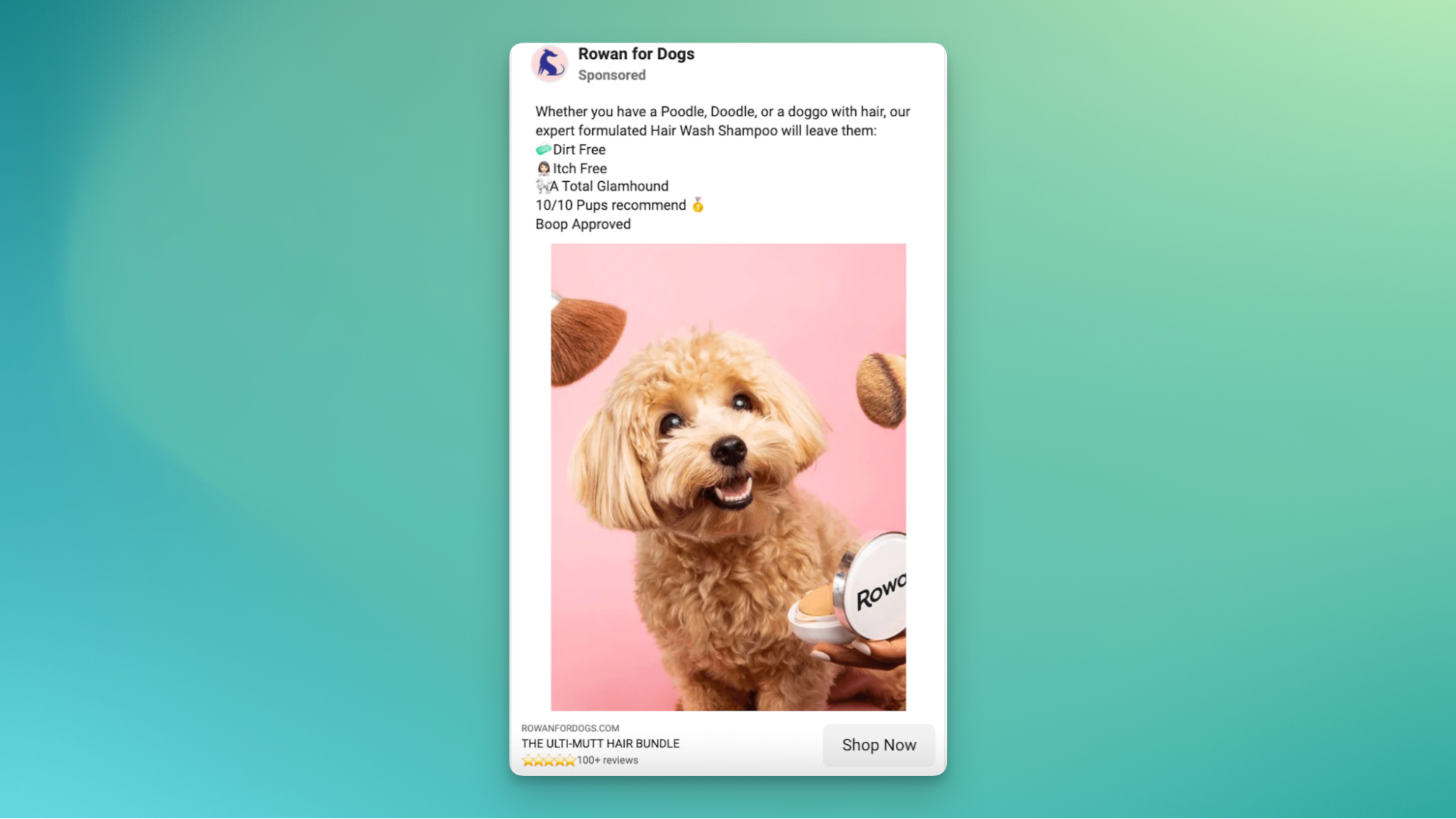
Rowan for Dogs uses cute dogs in many of its Facebook ads.
Start selling your products on Facebook
Shopify comes with powerful tools that help you list, promote and sell products on Facebook and Instagram. Create product collections, showcase your brand and products, and make sales on Facebook and Instagram from one place.
Start selling on Facebook
11. Performance marketing
Performance marketing relies on advertising through a third party to convert customer interest into a definable action, such as a clicking on a link. In today’s digital environment, primary performance marketing channels include Google Ads and native advertising programs on social media sites.
If you have an ad budget to spend, performance marketing is a low-risk, trackable strategy for brands that pays advertisers only when they drive results for you.
12. Influencer marketing
An influencer marketing strategy involves companies paying an external content creator or influential person to promote products to their (often substantial) following. Influencers usually get paid per post or promotion, with the goal of driving engagement or increasing a company’s conversion rate. Influencers may also participate in another type of marketing: affiliate marketing.
13. Acquisition marketing
Acquisition marketing is a strategy specifically designed to attract new customers, converting strangers to the brand into qualified leads. Focusing on the top of the sales funnel, acquisition marketers use tactics such as SEO, email marketing, and social media marketing to increase customer acquisition rates.
14. Mobile marketing
Mobile marketing is any campaign a business uses to reach customers through a smartphone or tablet. This type of marketing takes advantage of features unique to mobile devices, like GPS, to offer personalization, time and location-sensitive promotions. Mobile marketing includes both SMS and MMS marketing and mobile app marketing.
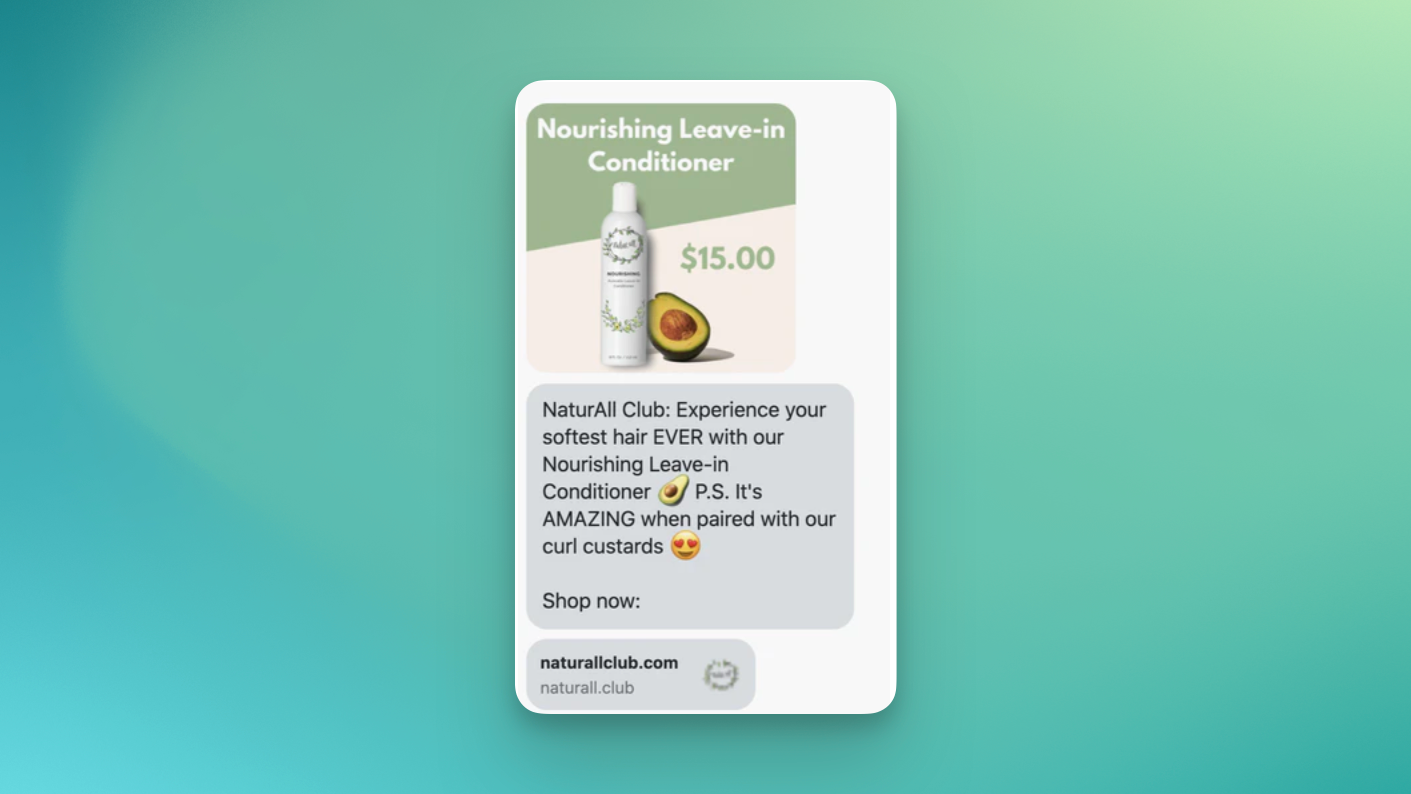
NaturAll Club sends upsell messages to customers via text message. Fantastic Texts
📲 Want to start texting with your customers? Try an SMS marketing app on the Shopify App Store.
15. Inbound marketing
Inbound marketing involves drawing viewers to your brand rather than reaching out for their attention. It’s closely related to content marketing, but involves SEO and social media marketing. Basically, it’s the top part of your marketing funnel. The content you create throughout these channels is used to address specific challenges your customers are having, get seen online, and prepare individuals to convert on your website.
Cause-based and event marketing strategies
Brands can also market their products or services and do better for the world. That’s where these marketing strategies come into play.
16. Cause marketing
Cause marketing is a two-sided idea—it allows brands to gain a competitive advantage while simultaneously contributing to society. Cause marketing is, by definition, a form of corporate social responsibility (CSR), where businesses and nonprofits work together to benefit one another. It is a win-win model, in which companies can support causes they believe in while achieving their business objectives.
17. Event marketing
Event marketing is a marketing strategy designed for conferences, professional seminars, trade shows, or other industry events. But increasingly, brands are finding marketing opportunities at other in-person events such as local markets and pop-up store venues.

Kylie Cosmetics brought the brand to life with a pop-up shop in LA
With event marketing, businesses set up branded spaces to maximize their exposure, generate leads, and increase their potential client base.
This approach involves face-to-face interaction, effectively connecting customers with a brand or service to build a solid, long-term relationship. Event marketing also presents opportunities to make direct sales.
💡Read: The Kylie Effect: The Power of Offline Experiences for Online Brands
Start selling in-person with Shopify POS
Shopify POS is the easiest way to start selling in-person. Take your brand on the road and accept payments, manage inventory and payouts, and sell everywhere your customers are—farmers markets, pop-up events and meetups, craft fairs, and anywhere in between.
Discover Shopify POS
Innovative marketing strategies
Brands looking to break the mold use the following unconventional marketing strategies to promote their products.
18. Experiential marketing
An experiential retail experience provides shoppers with an in-person, live experience of your brand. As customers become more selective about the brands they shop with, the in-store experience needs to stand out—experiential retail helps make that happen.
However, it cannot be too gimmicky and eliminate the transactional aspect. Shopping is still about discovering products and buying them.
📚Learn: Experiential Retail: 6 Ideas To Drive Foot Traffic
19. Guerrilla marketing
Guerrilla marketing involves low-cost, unconventional marketing techniques that generate high profits. Jay Conrad Levinson coined the term in his 1983 book called Guerrilla Marketing. It’s the perfect tactic to bridge the gap between online and offline experiences, with an element of surprise, like flash mobs or location filters.
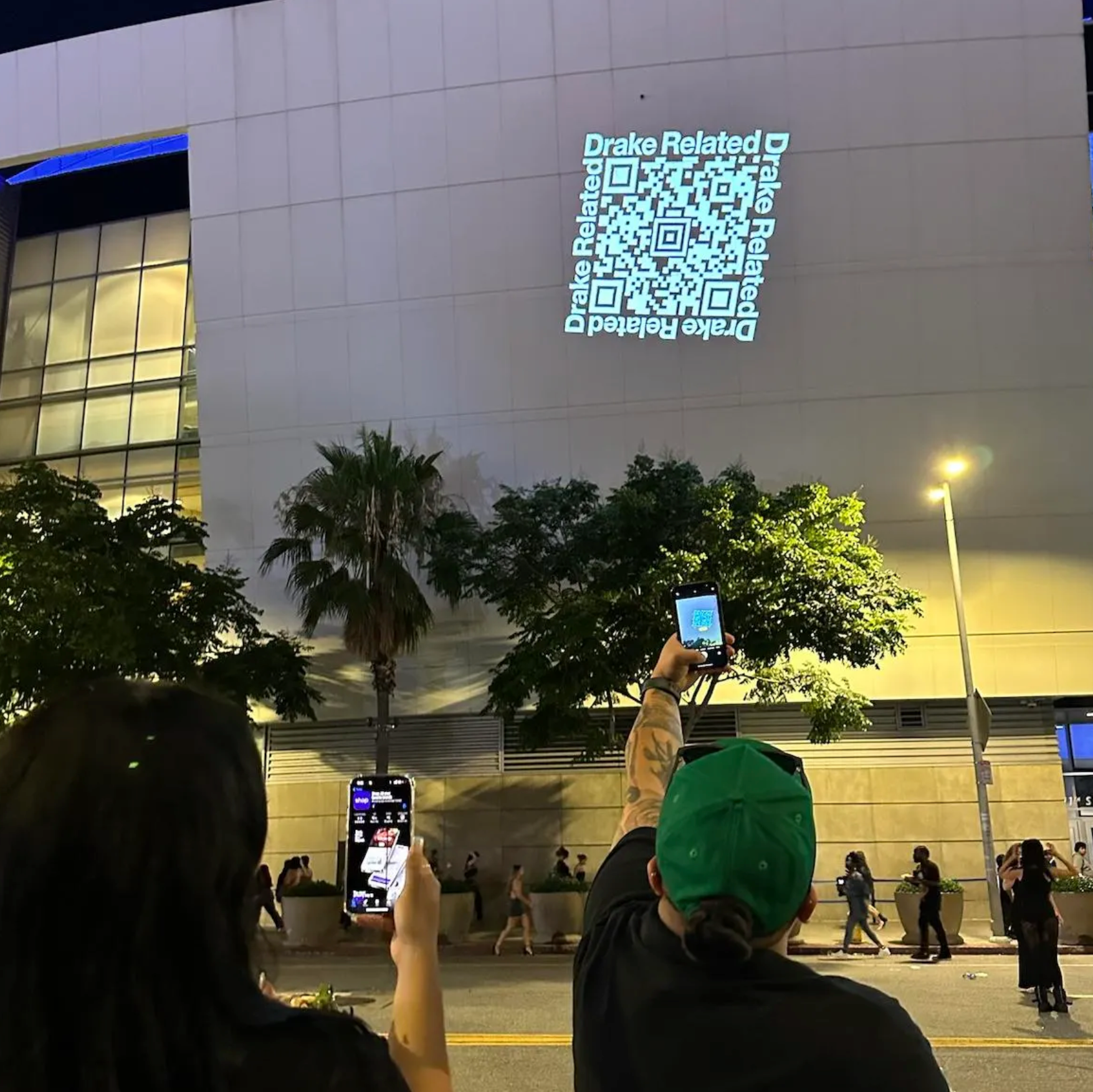
Shopify partnered with Drake Related, to give fans access to new merchandise, by downloading a QR code connecting them to Drake’s Shopify store.
20. Viral marketing
Viral marketing is a strategy brands use to spread information about a product rapidly. It relies heavily on a mix of word-of-mouth marketing and social sharing, with content that’s interesting enough for people to share with their friends.
Heyday Canning, a brand that sells canned beans, is a champion at viral marketing campaigns. The brand’s one-for-one Bean Swap event was one of those viral moments. Customers brought in cans of beans in exchange for Heyday cans, and the swapped cans were donated to City Harvest, a food rescue nonprofit.
💰Learn from Heyday’s successful event and hear founder Kat Kavners’s advice for planning a viral marketing campaign for your own brand.
21. Neuromarketing
Neuromarketing is a fascinating blend of science and marketing. It aims to understand how a shopper’s brain reacts to marketing stimuli, like ads, product packaging, and brand experiences.
Say you are developing a new chocolate bar. Rather than guess what might appeal to customers on the shelves, you run a test. You create two different packaging designs and monitor the person’s brain activity to each. Whichever packaging produced a higher amount of activity would be the package you go live with.
What is brand marketing?
Brand marketing spans both traditional and digital marketing, and extends beyond the basic awareness-to-conversion funnel to establish a lasting relationship between the consumer and a brand.
Brand marketers research their customers to build buyer personas, around which they can create messaging that establishes a connection between the business and the customer. This relationship and trust help make items or images associated with the brand more readily recognizable (think the Apple logo or the Nike swoosh). High visibility and recognition are two effective ways to remind customers about your products.
Use multiple types of marketing for your online business
All types of marketing can be complex and require research, analytics, and strategy to determine the best way to reach an audience. The right marketing strategy depends on a number of factors, such as company size, budget, and goals.
For instance, direct mail marketing may be more successful in older, tight-knit communities, whereas younger audiences may be more receptive to punchy social media campaigns and trendy video content.
With so many marketing avenues to choose from, every company has ample opportunity to embrace the strategies that fit its short- and long-term goals, target demographic, and available financial resources.


